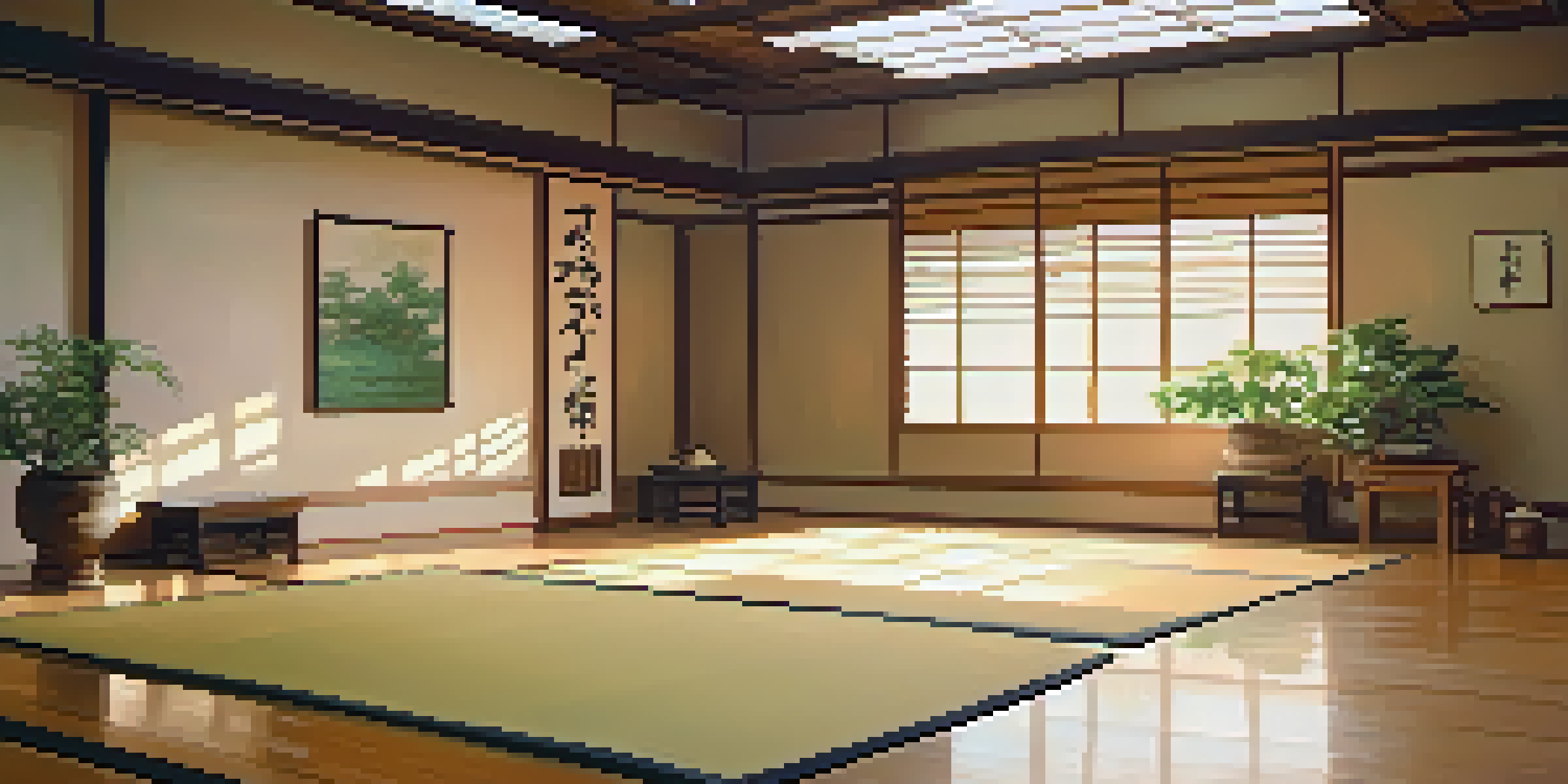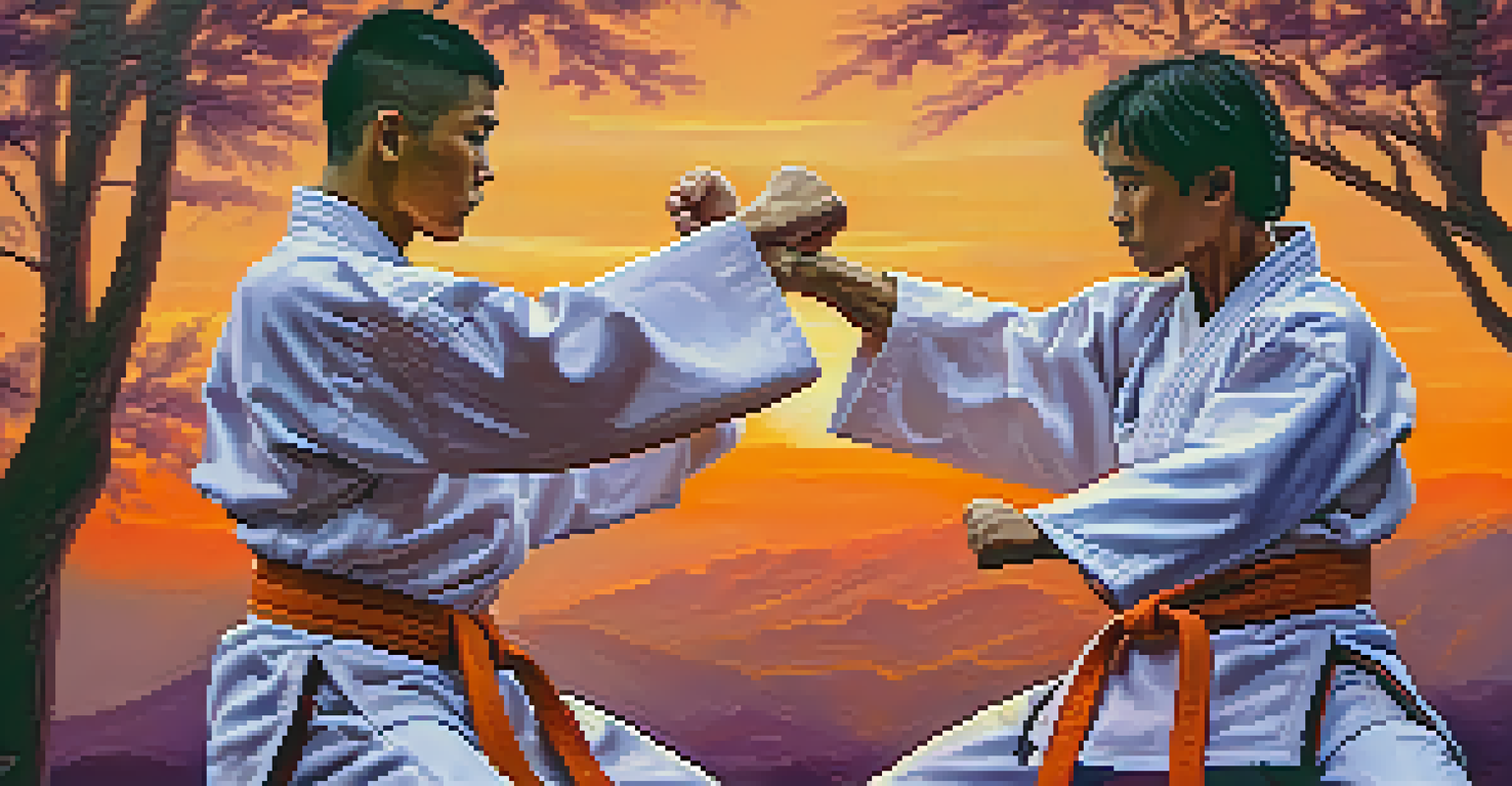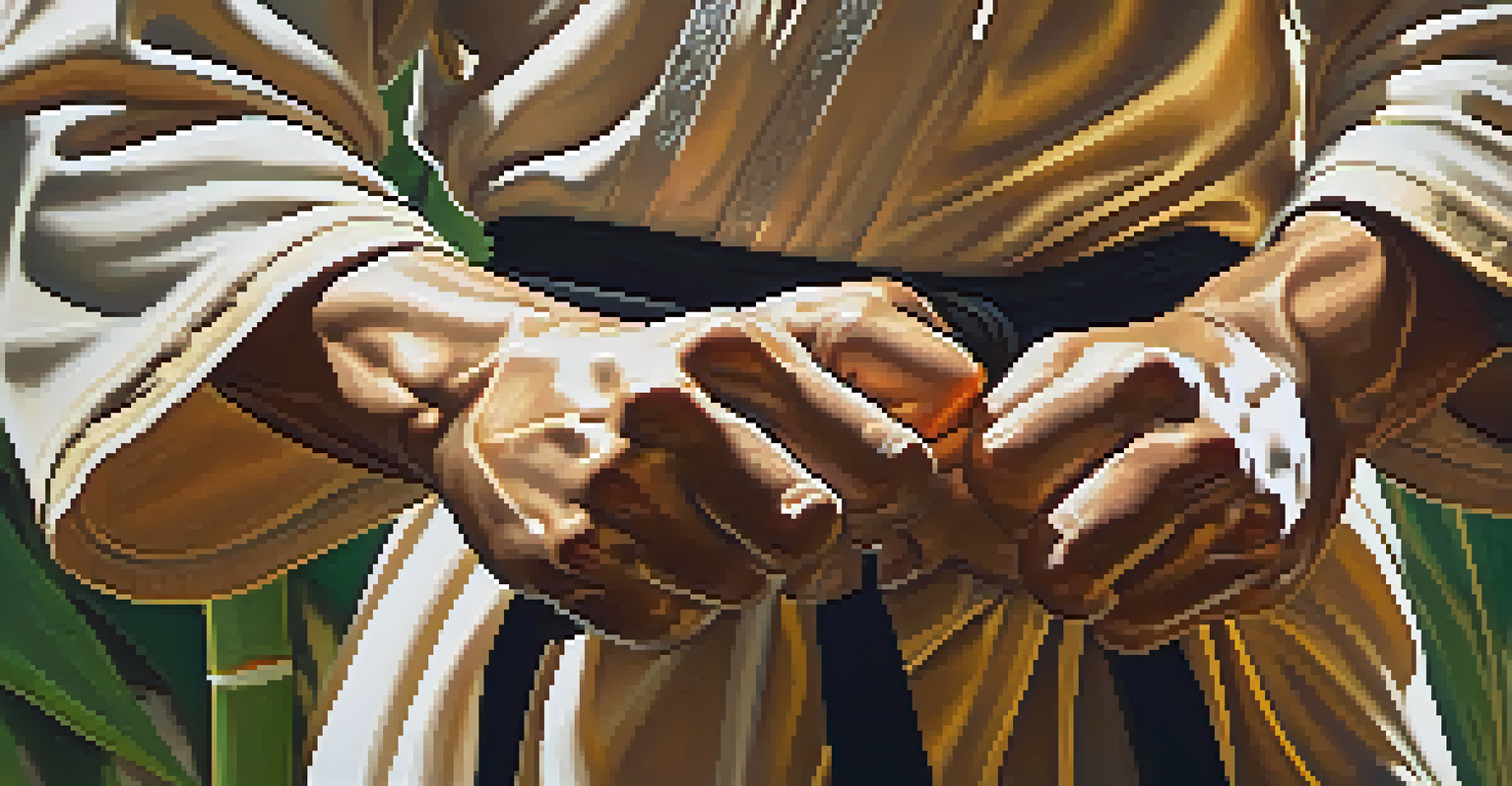The Role of Mental Preparedness in Martial Arts Self Defense

Understanding Mental Preparedness in Martial Arts
Mental preparedness is a crucial aspect of martial arts that often gets overlooked. It's not just about physical training; being mentally ready can make all the difference when facing a real-world threat. This involves developing a mindset that allows practitioners to stay calm, focused, and agile in challenging situations.
The greatest weapon against stress is our ability to choose one thought over another.
When you step onto the mat or into a training session, the goal isn’t just to learn moves; it’s to cultivate a mental framework that supports your physical skills. This framework helps you respond effectively rather than react impulsively when faced with danger. In martial arts, being mentally prepared means having the confidence to execute techniques under pressure.
Just like an athlete visualizes their performance before a big game, martial artists can benefit from mental rehearsal. By envisioning potential scenarios and how to respond, you build mental pathways that enhance your reaction time and decision-making skills during an actual confrontation.
The Mind-Body Connection: Why It Matters
The mind-body connection is a fundamental concept in martial arts, emphasizing that mental acuity enhances physical performance. When your mind is clear and focused, your body can execute techniques more effectively. This synergy is vital in self-defense situations where hesitation can be detrimental.

For instance, consider a situation where you need to defend yourself. If you're mentally scattered or anxious, your movements may be sluggish and uncoordinated. However, with proper mental preparedness, you'll react instinctively, allowing your training to kick in seamlessly. This connection is what can separate a successful defense from a potential failure.
Mental Preparedness is Crucial
Being mentally prepared enhances physical skills and allows martial artists to respond effectively under pressure.
Practicing mindfulness techniques, such as deep breathing or meditation, can strengthen this mind-body link. When you incorporate these practices into your routine, you not only improve concentration but also enhance your overall resilience, making you more capable of handling unexpected challenges.
Building Situational Awareness for Self Defense
Situational awareness is a critical component of self-defense that goes hand-in-hand with mental preparedness. It involves being cognizant of your surroundings and recognizing potential threats before they escalate. This heightened awareness allows martial artists to identify escape routes and assess the intentions of others.
In the middle of difficulty lies opportunity.
Imagine walking through a busy street; someone with strong situational awareness would notice unusual behavior or an approaching individual who seems out of place. By being alert, you can avoid confrontations or prepare yourself mentally for a possible encounter. This proactive approach is essential in martial arts self-defense.
Training drills that focus on awareness can enhance this skill. Practicing scenarios where you must assess your environment and react accordingly will build both confidence and competence in real-life situations. This preparation can be the difference between being caught off guard and successfully defending yourself.
The Role of Visualization Techniques
Visualization is a powerful tool used by athletes and martial artists alike to enhance performance and mental preparedness. By vividly imagining yourself executing techniques or responding to threats, you train your brain to react more effectively when it matters most. This mental practice can significantly boost your confidence and readiness.
For example, before a training session, you might close your eyes and visualize a scenario where you successfully defend against an attacker. This not only helps to reinforce your techniques but also reduces anxiety associated with actual confrontations. The brain learns through repetition, and visualization provides a safe space to practice without the physical risk.
Mind-Body Connection Matters
A clear and focused mind improves physical performance and reaction times in self-defense situations.
Incorporating visualization into your routine is simple and can be done anywhere. Just a few minutes of focused imagery can enhance your mental clarity and prepare you for whatever challenges lie ahead, making it an invaluable part of your martial arts training.
Developing Resilience Through Mental Training
Resilience is the ability to bounce back from adversity, and it's a key trait for anyone involved in martial arts. Mental training plays a significant role in developing this quality, helping practitioners to cope with stress and setbacks. The more resilient you are, the better equipped you'll be to handle confrontational situations.
In martial arts, resilience can be cultivated through challenging training exercises that push your limits. Facing difficult opponents or enduring rigorous drills helps to build a strong mental fortitude. This experience translates into real-life scenarios, allowing you to maintain composure and confidence under pressure.
Moreover, resilience is not just about physical toughness; it also involves emotional strength. Learning to manage fear, frustration, and self-doubt is essential. By embracing challenges as opportunities for growth, you foster a mindset that thrives even in the most daunting circumstances.
Stress Management Techniques in Martial Arts
Managing stress is vital for effective self-defense, as high-stress situations can impair judgment and reaction times. Martial arts training often incorporates various stress management techniques, enabling practitioners to maintain focus and clarity even when adrenaline is pumping. This preparation can be crucial in a self-defense scenario.
Techniques such as controlled breathing, visualization, and mindfulness can significantly lower stress levels. For instance, practicing deep breathing exercises before a training session can help you feel more grounded and ready to face challenges. This mental calmness allows you to think clearly and act decisively when it counts.
Visualization Boosts Confidence
Practicing visualization techniques helps build mental pathways that prepare martial artists for real-life confrontations.
Additionally, engaging in regular physical exercise, such as martial arts, serves as an outlet for stress relief. The routine of training not only builds physical strength but also provides mental clarity, creating a cycle that enhances both mental preparedness and self-defense skills.
Conclusion: Mental Preparedness as a Lifelong Practice
In conclusion, mental preparedness is a fundamental aspect of martial arts self-defense that should not be underestimated. It involves a combination of situational awareness, resilience, visualization, and stress management techniques. By prioritizing mental training alongside physical practice, martial artists can significantly enhance their overall effectiveness.
Just like physical skills, mental preparedness requires continuous practice and refinement. It's not sufficient to learn techniques; you must also cultivate the mentality that supports them. This dedication to mental growth can lead to a more confident and capable martial artist, ready to face any challenge.

Ultimately, martial arts is as much about the mind as it is about the body. By embracing mental preparedness as a lifelong practice, you not only improve your self-defense skills but also enrich your overall martial arts journey.